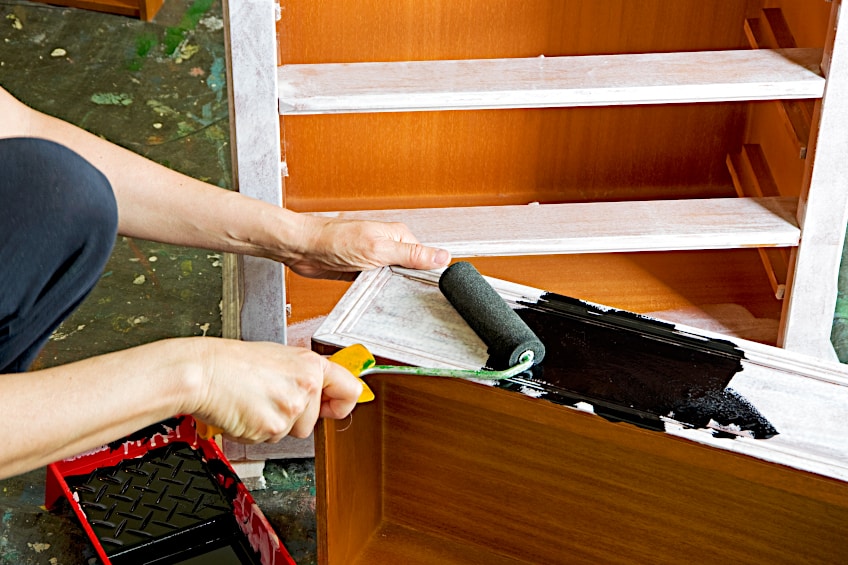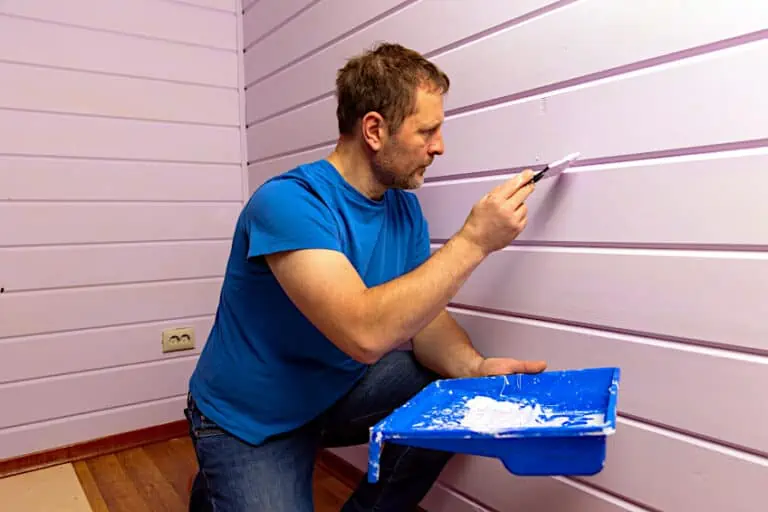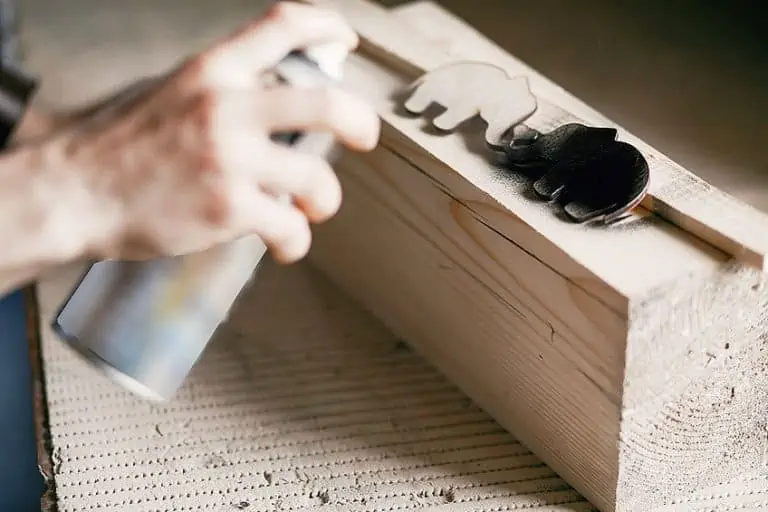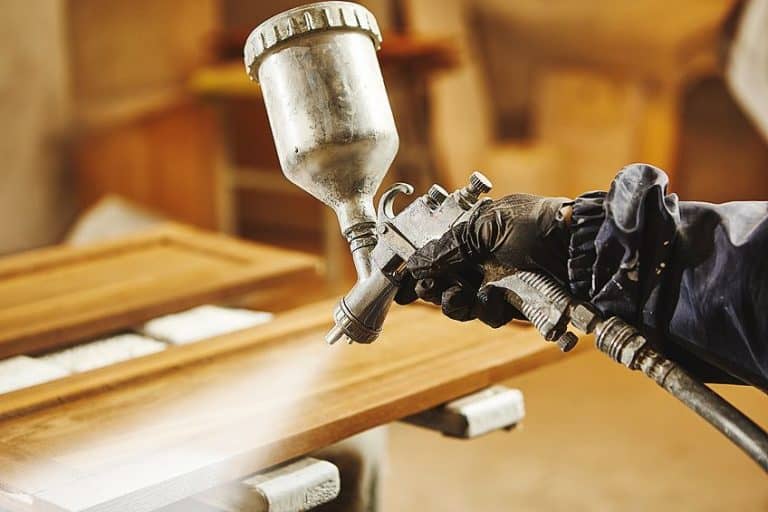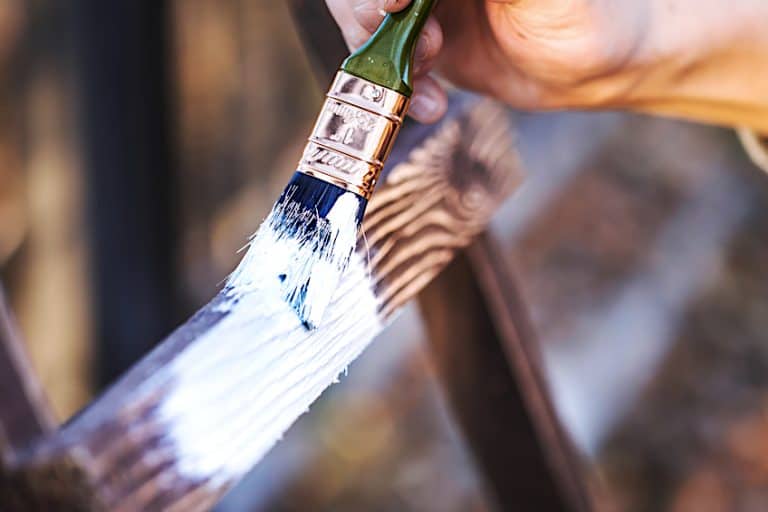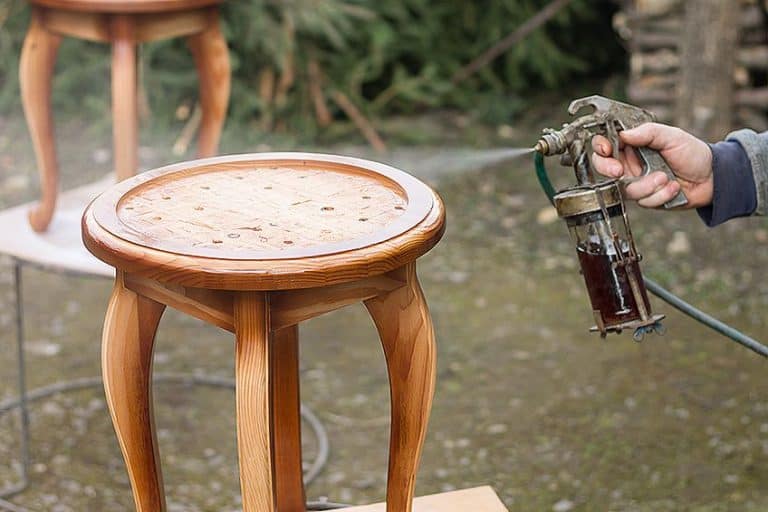How to Paint Laminate Furniture – Tips on Painting Laminate Wood
Engineered wood tends to receive a lot of criticism, especially from those who prefer solid wood. One of the biggest criticisms that tends to be associated with engineered wood is that it can be challenging, if not impossible, to treat the way solid wood usually is. One of the most popular types of engineered wood is laminate, which is used to make a number of commonly used furnishings. Can laminate furnishings be painted and stained though? Let’s have a look at this incredibly versatile engineered wood and find out whether you’ll be able to change its look.
Table of Contents
What Is Laminate Furniture?
As we mentioned previously, laminate is a type of engineered wood composed of a bunch of composite materials joined together through the use of high-strength adhesives and heat pressing. Laminate furniture is then various furnishings created from this material. In this regard, it isn’t much different from many other engineered wood materials.
Engineered wood is made of a number of different materials, and depending on the manufacturer and/or intended application of the wood other materials can be added to give the board different properties.
These pieces are mixed with formaldehyde, adhesives, and melamine resin. The formaldehyde is mixed with the melamine resin in order to stabilize it and reduce harmful emissions. This mixture is placed in a heat press until it forms a solid board that can be used for things like cupboard doors, flooring, storage structures, and even television stands. The board then receives a laminate coating on both of its surfaces (and sometimes its edges), which usually carries the image of solid wood grain, which is why laminate wood is often referred to as “fake” or “imitation” wood.
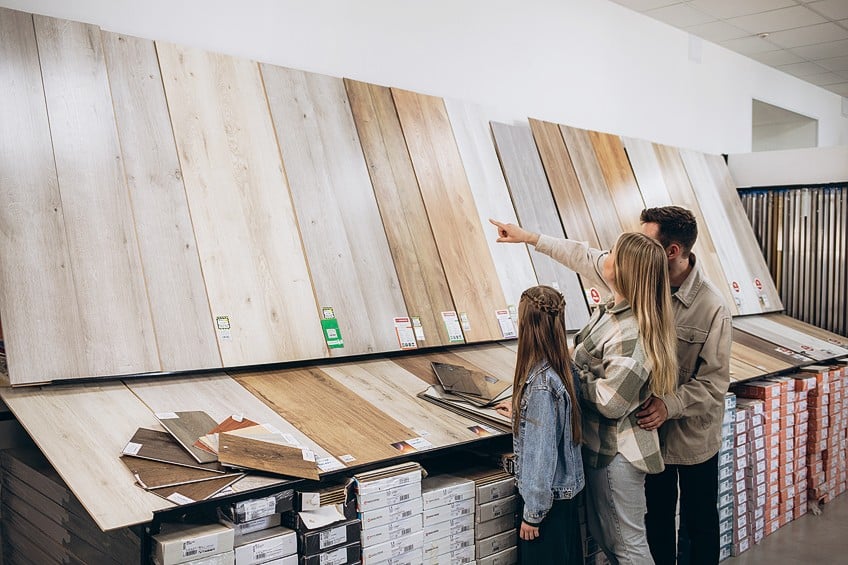
Many believe that laminate is made of plastic, but in reality, it is only the surface coating that is made of a laminate composite, hence the name. Laminate wood tends to be rather strong and has the potential to last far longer than conventional hardwood furnishings if it’s cared for correctly. In fact, the laminate wood board is commonly used to create floorboards. Essentially, laminate furniture provides us with an affordable and durable alternative to hardwood.
Considering that you’ll likely get a lot more laminate for the same amount of money you’d pay for any amount of hardwood, it’s a surprise that it’s an extremely popular wood alternative with people finding new and exciting ways to use engineered wood materials all the time.
Advantages of Painting Laminate Furniture
Painting any surface regardless of the material it is made of presents many advantages that are commonly associated with a surface coating. Laminate is no exception as painting the surface of a piece of laminate furniture will improve the lifespan and appearance of the furniture. Let’s have a look at exactly how painting laminate furniture can benefit you going forward. One of the most obvious advantages of painting laminate furniture is the improvement in appearance.
A fresh coat of paint (when applied correctly) can breathe life back into older laminate furniture or make furniture with a dull finish appear brighter and better suited to the space it’s situated in. Pretty neat right?
Surface coatings like paint also act as a protective layer for pretty much any surfaces they are applied to. Most commonly used paint types are capable of protecting a surface from things like impact, abrasion, heat, cold, UV light, mold, and even insect infestation. Laminate is naturally resilient to all of the aforementioned, but a nice coat of paint certainly helps preserve the look and feel of your laminate furniture. Painting your laminate furniture can also reduce the amount of glare your surface reduces.
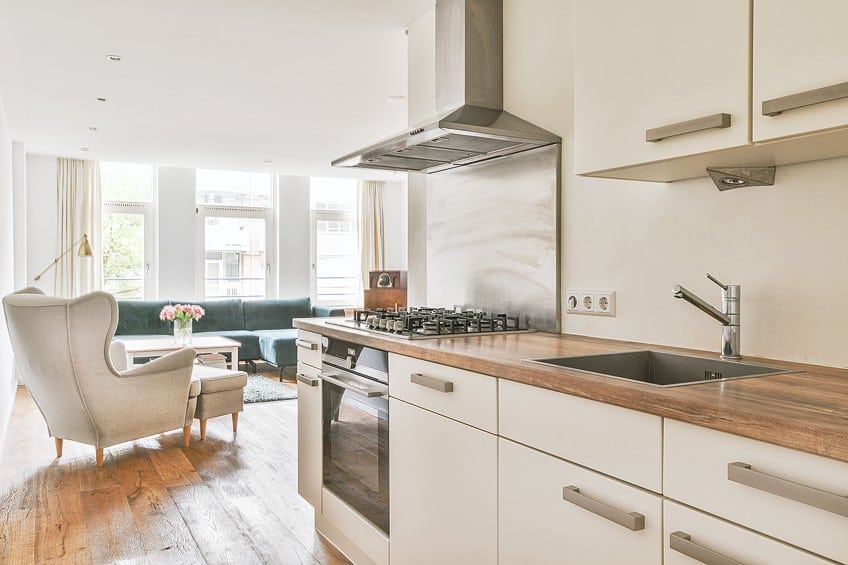
Laminate material naturally reflects light, and if you’d like to reduce the amount of light the surface reflects, you can add a coat of flat or matte paint to the surface of your laminate workpiece. This is ideal for smaller faces where light does not need to be widespread. As you can see there are many advantages to painting laminate furniture, but the manner in which the paint is applied can affect the quality of the finish and how the paint looks overall.
This is why it’s important to understand how to properly paint any laminated surface before you begin, as it can save you quite a bit of time and money.
How to Paint Laminate Furniture
As we mentioned previously, there are many advantages to painting laminate furniture, but if done incorrectly it can ruin the look and feel of your workpiece. It’s for this reason that we have put together a short tutorial detailing how to paint laminate furniture, so you’re able to achieve the best finish possible on your laminate surfaces.
Prepare the Surface
When painting any material, often the most important part of the process is the preparation. Preparing your surface correctly ensures that your paint adheres well and that your finish appears even and smooth. How do you prepare your surface when painting laminate How does one go about preparing their surface when painting laminate then? Well, you can start off by cleaning your workpiece.
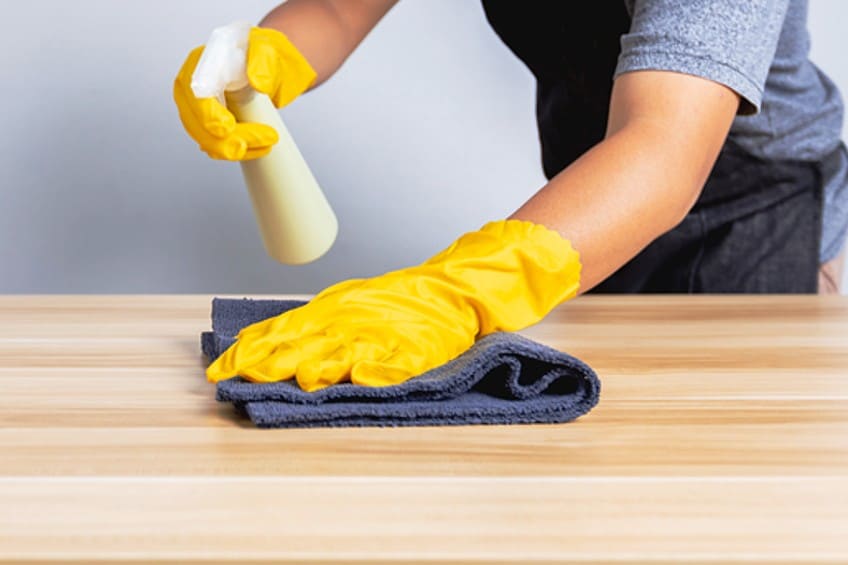
Clean the Surface
Cleaning the surface is a crucial part of the painting process. Why? When a surface is thoroughly cleaned it ensures that dirt particles are purged from the surface. This ensures that you’re able to sand and prime the surface without bits of dirt and grime impacting your sandpaper, primer, or paint. When cleaning laminate, some good old-fashioned soap and water along with some elbow grease will do just fine.
Always ensure the surface has had the opportunity to dry before proceeding.
Sand the Surface
When painting laminate furniture, sanding the surface is extremely important. After all, laminate surfaces have very little surface friction, which makes it rather challenging for most types of paint to adhere to them well. Roughing up the surface of your laminate furniture a bit before paint is applied will allow your paint and/or primer to adhere far better than if the surface was left as is. If you’re curious regarding what way to go about roughing up the laminated surface we have you covered.
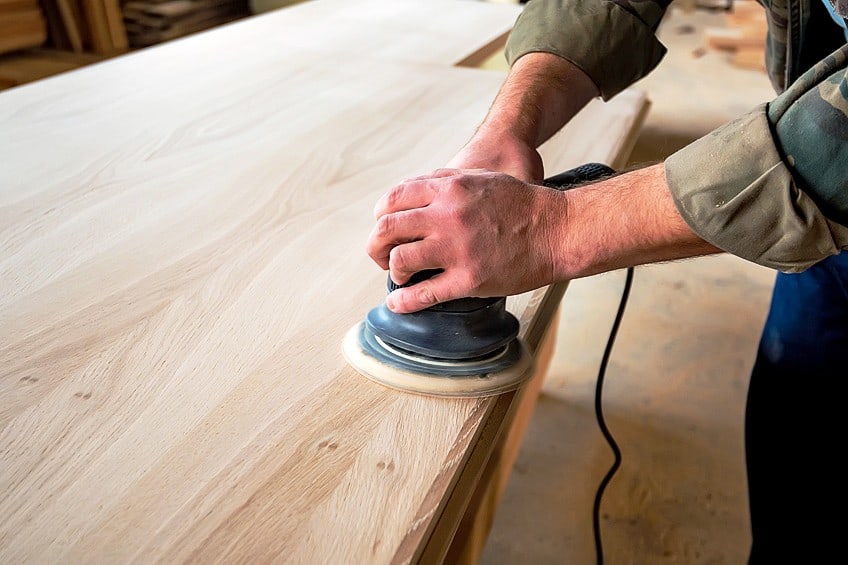
Using a fine-grit sandpaper (220-grit and upward) evenly sand the surface of your workpiece. Start at one end and work your way to the other, sanding in sections if your workpiece is particularly large. Once you’re done, remove any wood particles left on the surface of the workpiece with a clean cloth before moving on to the next step. Finally, using some compressed air or a clean cloth, clear the surface of all wood particles.
Fill In Any Holes
Now that the surface has been roughed up a bit it’s time to repair any imperfections that may be present on the board. What is the smartest way to do this? We recommend using some run-of-the-mill wood filler. All you need to get started is some wood filler and a putty knife. Star by taking a bit of wood filler on your putty knife and filling any imperfections like holes and dents on the surface of the laminate.
Once a hole has been filled, drag the putting knife over the repaired area at a 45-degree angle to remove any excess putty from the surface, flattening the sealed section simultaneously.
Repeat this process until all of the imperfections in the surface of the laminate have been filled and then allow the filled areas to set and dry completely according to the manufacturer’s recommendation. Now that all of the imperfections in the surface of your workpiece have been filled, it’s time to give the affected areas a light sanding to ensure they are flush with the rest of the surface.
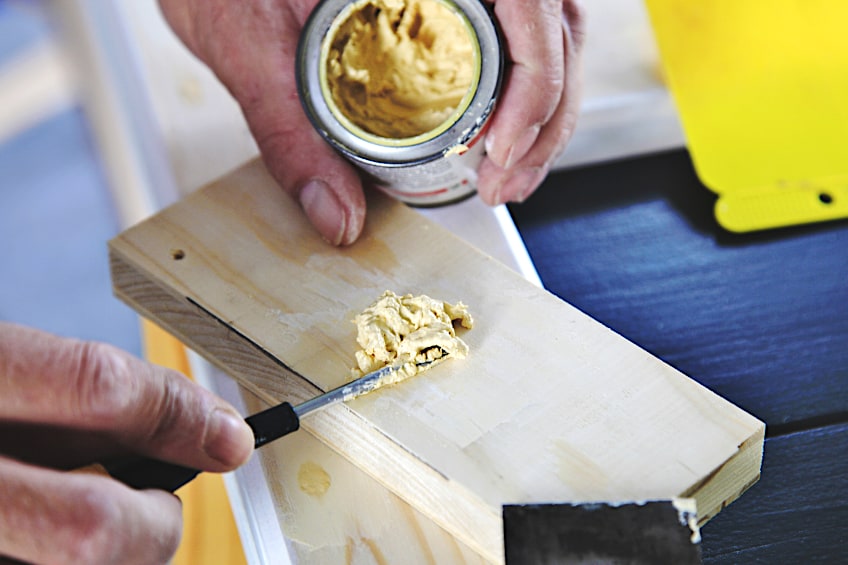
Using the same sandpaper you used earlier, lightly sand the affected areas in a circular motion until they are nice and flush with the larger surface. Remove any filler dust with a clean cloth before moving on.
Prime the Surface
Painting laminate wood can be challenging, and the last thing you need is for your paint to adhere poorly. Thankfully, a thoroughly primed surface will almost always ensure your paint sticks to your surface like glue all while providing a smooth and even finish. To get started, ensure that you have the correct primer for your paint type. How do you do this? Primers are differentiated by type much the same way paints are. Therefore, oil-based paints are paired with oil-based primers, latex-based paints are paired with latex-based primers, and acrylic-based paints are paired with acrylic-based primers.
Pretty simple right? Using the incorrect primer for your paint type can result in a poor finish, so double-check before you begin.
Once you’re sure that you have the correct primer, it’s time for you to get started. Shake the primer container to ensure that the mixture’s heavier and lighter particles are once again mixed with one another. Next, get a bit of wood primer inside a painter’s tray (not too much) and dip your brush in it to begin.
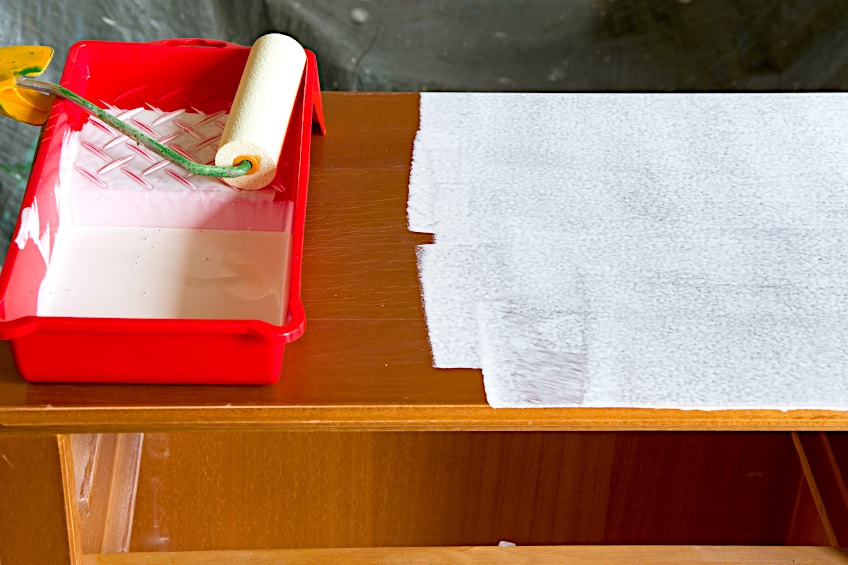
Begin applying the primer to the surface of your laminate wood. Start at one end of the board and work your way to the other. If your workpiece is large, you could try working in sections, being sure to blend one section in with the next as you move along.
Should your workpiece be shaped weirdly you could work from the middle outward or from the edges inwards.
Painting the Surface
Once the surface has been prepared, it’s time to get to painting. Before you begin painting it’s best to ensure that you have the ideal paint for painting laminate wood. Can laminate wood be painted using any paint though? Let’s have a look at what paint types and finishes are the best choice when painting wood laminate, why, and how to go about applying said paint to your furniture.
Choosing the Right Paint
When painting wood laminate, the right paint type can make all the difference. While a good primer will ensure that any paint type adheres well to a wood laminate surface, the paint with the best track record on the surface is latex-based paint. Why? Latex paints tend to provide a smooth, even finish thanks to their inherent consistency and finish.
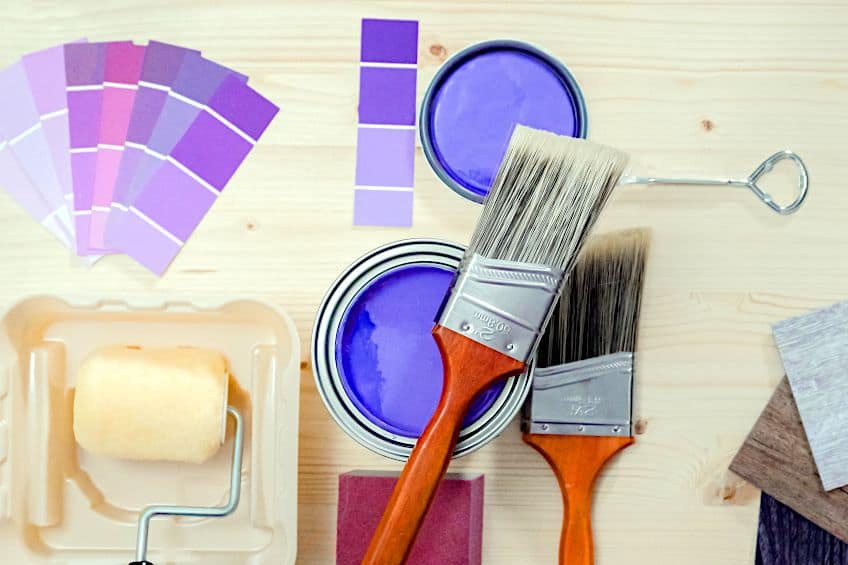
There are many brands to choose from when it comes to latex-based paints, but as with most things in life, you tend to get what you pay for. Since laminate isn’t a surface that is conventionally painted, we recommend you go with a trusted brand that you know produces high-quality paints. Spending a few extra dollars will save you the time and frustration of potentially having to remove your paint and repeat the process should the coating rise or chip due to poor quality.
Choosing the Right Brush and Roller
While having the correct paint type is important, choosing the right tools for applying your paint is equally as important. What is the best type of brush and/or roller when painting wood laminate? Since you’ll be using a roller to paint the majority of your board’s surface, let’s have a look at what type of roller would be the ideal choice first. Arguably the best type of roller for painting wood laminate is a microfiber roller.
Why? The nap fibers will allow the paint to be distributed evenly while ensuring that the paint does not run off the roller when pressure is applied while in contact with the wall. This usually results in a really smooth, even finish that’s sure to put a smile on your face.
Now that you know what roller to use when it comes to laminate wood, what brush should you use? Arguably the best brushes to use when painting with latex-based paints on any surface are polyester brushes. Why? These brushes tend to provide the best distribution while retaining their shape relatively well throughout the application process.
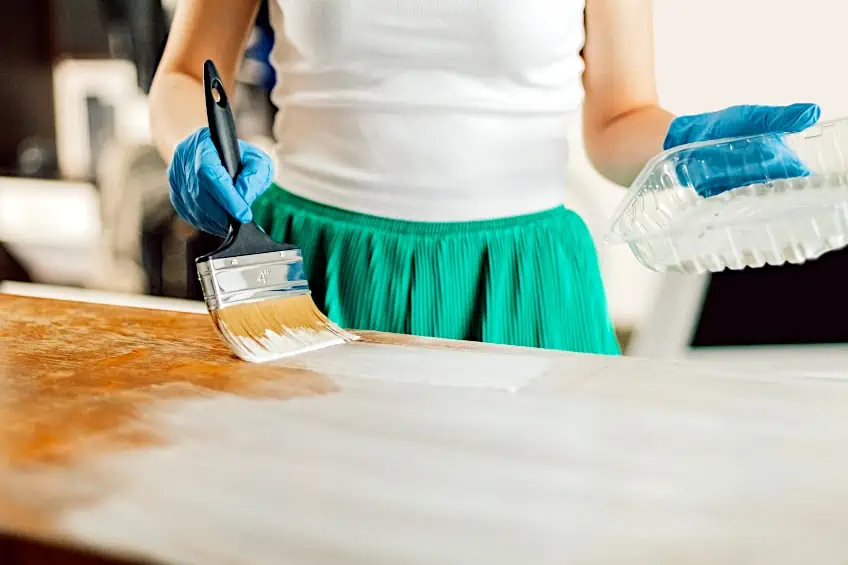
That being said, both of these options have been recommended based on the experience of crafters, but that doesn’t mean you should dismiss newer, more innovative brush and roller designs. If you’re purchasing your tools in-store, why not ask for brush and roller suggestions based on the material you’ll be painting and the type of paint you will be using?
Applying Your Paint
Preparing the surface and choosing the right tools for the job is only half the job, and the it is finally time to get down to the actual painting of the workpiece. Painting laminate furniture isn’t that much different from applying primer, after all both paint and primer have a similar consistency and can be applied with a brush and/or roller. How do you apply paint? Begin by thoroughly re-mixing the paint so that the mixture contains both the heavier and lighter particles instead of one at the bottom of the can and the other at the top.
Once completed, we recommend pouring a bit of paint out into a separate container like a small bucket or tray before you get started.
Paint along the length of your workpiece, starting at one end and working your way toward the other, just as you did with the primer. If your workpiece is really big, try painting it in sections, blending one area in with the next as you go along. If your laminate material is shaped oddly, try painting the edges first, or tacking the middle and then working your way to the ends. Once the majority of the surface has been painted you can use your paintbrush to tackle the hard-to-reach areas and reinforce areas that require a more angular approach.
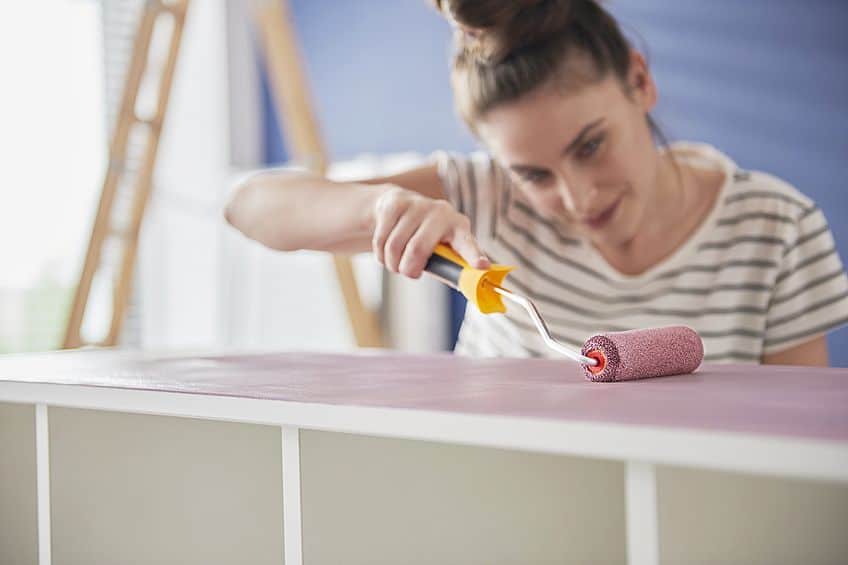
If you’re happy with your cutting work, make sure that the new coating has the opportunity to dry for the time indicated by the manufacturers of the paint before more coats are applied. If you would like a really smooth finish, you could give the surface a light sanding between coats to ensure that one blends in nicely with the next.
Once your final coat has been applied, allow the surface to dry completely as recommended by the manufacturer before you attempt to make use of your newly refinished laminate furniture.
Finishing Touches
Now that you’ve completed the painting of your laminate furniture it’s time to have a look at some finishing (and somewhat optional) touches that you can try to ensure that your furnishings are both ready for use and have a more robust finish. Here are a few steps you can follow that are sure to make your finish look as good as possible.
Sanding Between Coats (Optional)
Sanding the surface between coats is one of the best ways to ensure that your finish is even and that the color isn’t too striking. This allows each coat to blend in nicely with the next while also ensuring that the surface is conducive to receiving an additional coat by increasing the overall surface friction of the initial layer.
Keep in mind that this step is an option and isn’t always necessary.
Sealing Your Painted Surface (Optional)
Sealing the surface of your workpiece is almost always a good idea. Why? Well, sealing your surface not only protects your paint from forces like impact, abrasion, heat, moisture, and insect infestation, but it also (usually) provides you with a brilliant sheen finish that’s sure to liven up the look of your workpiece and increase its longevity. Sealing the surface of your workpiece is easy. All that you need to do is get some sealer on your brush and apply it along the length of your workpiece’s surface.
Once the sealer has been applied all you need to do is allow it to dry and cure for the time period indicated by the manufacturer and you’re pretty much good to go.
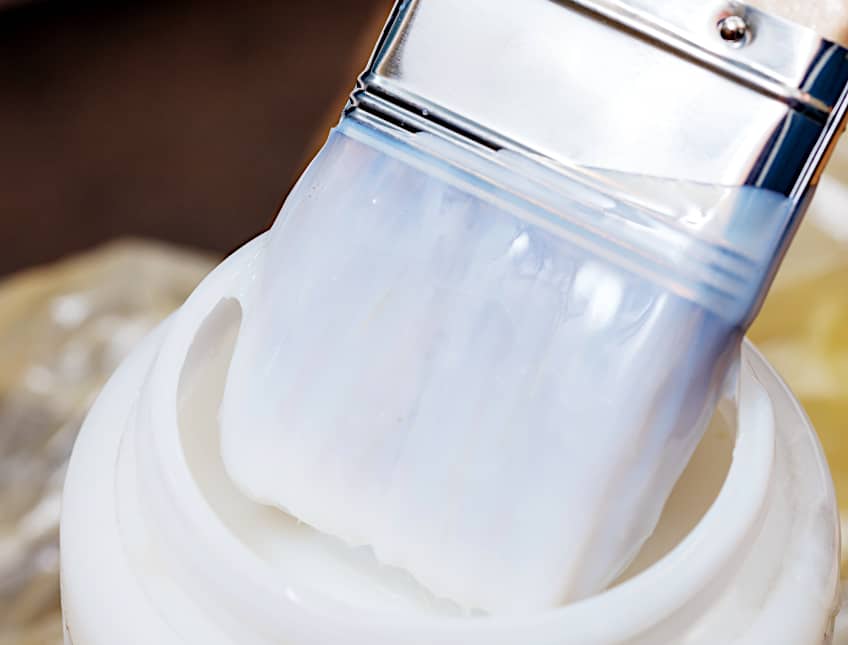
While some crafters prefer not to use a sealer, it is often due to it obscuring the grain and texture of solid wood boar. Since laminate does not have any grain and its texture is minimal, you won’t be missing much, and sealing your wood is an excellent way to ensure that your workpiece lasts for at least a decade.
Polishing Your Surface (Optional)
Refinishing laminate furniture is often accompanied by polishing the sealed workpiece. Once a workpiece has been sealed, you could use an orbital sander with a polishing attachment, or a cloth and some elbow grease, to polish the surface and give it a healthy shine.
While there is no practical value to this, it will make your workpiece look that much better.
Tips for Success
Refinishing laminated furniture might seem like a bit of a detour from conventional wood crafting, but don’t forget that the same rules apply. Ensure that your workspace is well prepared by laying down a tarp and covering any areas of your workpiece you don’t want to be painted using some painter’s or masking tape. Do your best to ensure that there is a constant flow of air both in and out of your work area.
This is especially important if you’ll be using paint that contains a lot of VOCs (volatile organic chemicals), in which case you should ensure that you are wearing a face mask and a pair of gloves graded for use with paint before you begin working.

Additionally, you should ensure that you are using the right brush and roller for the job. This might mean that you have to shop around and/or cough up a bit more money, but this will ensure that you achieve the best finish possible. Finally, ensure that you take your time and do not rush when you are refinishing laminated furniture.
Now that you know what laminate wood is, what it’s used for, how it can be better than hardwood, and how to paint it, why not give it a try for yourself? Remember to ensure that you have the correct brush and roller for the job, and that you take your time when painting any laminated wood surfaces in the future.
Frequently Asked Questions
Can Laminate Furniture Be Painted?
If laminate wood is so smooth, it would be impossible to paint, right? Well, you could try roughing up the surface and using a good-quality primer. Once this is done, can laminate furniture be painted then? Yes! With the right tools and preparation, you can definitely paint laminate furniture.
Can Laminate Furniture Be Painted Without Sanding?
If you would like to know how to paint laminate furniture without sanding, you need to ensure that the surface is roughed up enough so that the paint and primer adhere to the surface adequately. Therefore, if you want to know how to paint laminate furniture without sanding, the best options to use are liquid sandpaper, or self-priming paint.
Is Laminate Furniture Strong?
Laminate furniture is indeed strong. Laminate, like many other engineered woods, can be made to fit a specific application. Laminate board can be made so strong that it can be used in the construction of floorboards and even for light-duty stairs.

I have been into woodworking since 2005 and woodturning since 2011. Because of my love for wood and woodworking, I started woodhappen.com to teach other enthusiasts about how to finish and seal wood, the best woodworking tools, the different types of wood, and everything else related to woodworking! Read more about me here.

